In 2017 Hull is UK City of Culture and this is
likely to be a great reason to visit the city as it starts its rebirth using
this great year as a catalyst.
by Alex Naughton, editing by Earl of Cruise
Tucked away at the top of the Humber estuary, off the North Sea coast is Hull and this is a city with a rich maritime and musical history. The city is unique in the UK in having had a municipally owned telephone system from 1902, sporting cream, not red, telephone boxes. The city is at the heart of the UK’s biggest port complex and home to Europe’s biggest wind turbine manufacturing plant, Hull is on its way to becoming a leading hub for renewable energy industries.
by Alex Naughton, editing by Earl of Cruise
Tucked away at the top of the Humber estuary, off the North Sea coast is Hull and this is a city with a rich maritime and musical history. The city is unique in the UK in having had a municipally owned telephone system from 1902, sporting cream, not red, telephone boxes. The city is at the heart of the UK’s biggest port complex and home to Europe’s biggest wind turbine manufacturing plant, Hull is on its way to becoming a leading hub for renewable energy industries.
Hull from Paull - Sourece: Wikipedia
Hull is the only city in the UK with its own
independent telephone network company, KCOM, formerly KC and KingstonCommunications, a subsidiary of KCOM Group. Its distinctive cream telephone
boxes can be seen across the city. KCOM produces its own 'White Pages'
telephone directory for Hull and the wider KC area. Colour Pages is KCOM's
business directory, the counterpart to Yellow Pages. The company was formed in
1902 as a municipal department by the City Council and is an early example of
municipal enterprise. It remains the only locally operated telephone company in
the UK, although it is now privatised.
White payphone Telephonebox - Source: Wikipedia
The first public hydraulic power network, supplying
many companies, was constructed in Hull. The Hull Hydraulic Power Company began
operation in 1877, with Edward B. Ellington as its engineer and the main pumping
station (now a Grade II listed building) in Catherine Street. Ellington was
involved in most British networks, including those in London, Liverpool,
Birmingham, Manchester and Glasgow, but the advent of electrical power combined
with wartime damage meant the Hull company was wound up in 1947.
Famous people of historic significance with a
connection to Hull are former city MP William Wilberforce who was instrumental
in the abolition of slavery and Amy Johnson, aviator who was the first woman to
fly solo from England to Australia.
A statue of William Wilberforce outside Wilberforce House, his birthplace in Hull - Source: Wikipedia
Amy Johnson (ca. 1934) - Source: Wikipedia
From its medieval beginnings, Hull's main trading
links were with Scotland and northern Europe. Scandinavia, the Baltic and the
Low Countries were all key trading areas for Hull's merchants. In addition,
there was trade with France, Spain and Portugal. As sail power gave way to
steam, Hull's trading links extended throughout the world. Docks were opened to
serve the frozen meat trade of Australia, New Zealand and South America. Hull
was also the centre of a thriving inland and coastal trading network, serving
the whole of the United Kingdom.
Throughout the second half of the 19th century and
leading up to the First World War, the Port of Hull played a major role in the
transmigration of Northern European settlers to the New World, with thousands
of emigrants sailing to the city and stopping for administrative purposes
before travelling on to Liverpool and then North America.
Parallel to this growth in passenger shipping was
the emergence of the Wilson Line of Hull. Founded in the city in 1825 by ThomasWilson, by the early 20th century the company had grown - largely through its
monopolisation of North Sea passenger routes and later mergers and acquisitions - to be the largest privately owned shipping company in the world, with over
100 ships sailing to different parts of the globe. The Wilson Line was sold to
the Ellerman Line - which itself was owned by Hull-born magnate (and the
richest man in Britain at the time) Sir John Ellerman.
The steamship (ss) ORLANDO, 1870, of WILSON LINE (fleet list) - Source: Wikipedia
The steamship (ss) CALYPSO, 1920, 3,817 GT, of WILSON LINE, ex ALEXANDRA WOERMANN, 1901, ex BRUXELLESVILLE,1897, (fleet list) - Source: Wikipedia
|
Whaling played a major role in the town's fortunes
until the mid-19th century. Hull's prosperity peaked in the decades just before
the First World War; it was during this time, in 1897, that city status was
granted. After the decline of the whaling industry, emphasis shifted to
deep-sea trawling until the Anglo-Icelandic Cod War of 1975–1976. The
conditions set at the end of this dispute initiated Hull's economic decline.
The Humber has powered the UK economy for decades,
bringing everything from food to freight, coal to cars, passengers to petroleum.
In fact the Humber is still the UK’s busiest port complex.
Today, the Humber’s location and ports connectivity
continues to drive some serious investments and innovation around the Estuary,
from energy and engineering companies to chemical and food manufacturers,
taking raw materials to manufacture, engineer and invent products and services
used around the world, 24 hours a day, 365 days a year.
Now the city is positioning itself and the Humber
as the UK’s Energy Estuary. The Humber is the UK’s Energy Estuary, bringing
power to the UK for decades in the form of coal, oil and gas but now it is
investing heavily to support wind energy.
Major new developments such as Siemens £160 million
investment in the Green Port Hull wind turbine production and installation
facilities in Yorkshire which will be based at Alexandra Dock. The investment
will provide a huge boost to the UK’s offshore wind industry and the Humber
region. The combined investment from Siemens and ABP of £310 million will
create up to 1,000 jobs directly, with additional jobs during construction and
indirectly in the supply chain.
Tourist attractions include the historic Old Town
and Museum Quarter, Hull Marina and The Deep, a city landmark. The
redevelopment of one of Hull's main thoroughfares, Ferensway, included the
opening of St Stephen's Hull and the new Hull Truck Theatre. Spectator sports
include Premier League football and Super League Rugby. The KCOM Stadium houses
Hull City football club and Hull FC rugby club and The Lightstream Stadium
rugby club Hull Kingston Rovers. Hull is also home to the English Premier Ice
Hockey League Hull Pirates.
Cruise Port of Call:
Currently cruise ships that visit Hull berth in
King George or Queen Elizabeth Docks within the enclosed docks at Hull that are
entered off the river through locks.
A new riverside cruise terminal is being developed
near the Deep to open by 2022. It will meet the growing demand for European
cruise ship growth and capitalize on the economic benefits to the local Hull
and regional economy calculated at £3.1 million in GVA economic impact for Hull
and £16 million for the Yorkshire economy. The project aim is to create Hull
and the sub-region as a new European visitor destination to showcase the
history and countryside of Yorkshire.
The Destination:
Hull is close to the Humber Bridge, which provides road links to destinations south
of the Humber. It was built between 1972 and 1981, and at the time was the
longest single-span suspension bridge in the world.
Hull Paragon railway station and bus interchange is
a major transport gateway. Visitors to Hull's Paragon Interchange are now
greeted by the new statue of Philip Larkin unveiled on 2 December 2010. A main route
from the Interchange leads through the some of the most important areas of our
City and which leads you down to the historic marina area. This route links
major areas of the city including Jameson Street (which is the main shopping
street). At the end of Jameson Street a new pedestrianised square will be
created, this will provide an area for events such as markets or entertainment
to take place. This then leads to King Edward Street and Queen Victoria Square.
The magnificent Queen Victoria Square has been transformed into a place people
use throughout the year and it is the heart of the City and a destination for
visitors.
Hull Maritime Museum in Queen Victoria Square
invites you to discover its stunning collection that includes ship models and a full-sized whale skeleton.
Whitefriargate then becomes the gateway to the Old
Town and leads you into Trinity House Lane and ultimately Trinity Square with the
historic Holy Trinity Church (Wiki)at its heart.
Holy Trinity Church, Hull - Source: Wikipedia
Finally this leads you down to the Fruit Market
area and Humber Dock Street which have a different ‘feel’ to the rest of the
City and a quirky and cosmopolitan atmosphere. The Fruit Market is a vibrant area known for art galleries and
music and performance venues and is an emerging digital hub which also forms
part of the Old Town Conservation Area. Its northern perimeter fronts the A63
Castle Street, which links the Port of Hull in the east to the M62 corridor in
the west. http://dinostar.co.uk/
Within the Fruit Market area, the C4Di centre is world-class workspace for digital and
technology companies. The Stage@The Dock opened in August 2016 as the city’s newest
outdoor venue. It is programmed by the Freedom Festival and has already played host to this event, plus a
number of other summer events. The Stage sits on top of the redeveloped Dry
Dock area and offers not only a fantastic multi-purpose events space, but also
a wonderful aspect of the city with The Deep acting as the perfect backdrop.
The remains of Beverley Gate are where, in 1642,
Sir John Hotham refused Charles I entry to the city, an act of defiance widely
acknowledged as the spark that ignited the English Civil War.
The Ferens Art Gallery is one of Hull’s most high
profile and popular cultural assets. It was extended and refitted in 1991. It provides
a state-of-the art display space for the city’s magnificent collections and
large-scale visiting exhibitions.
Ferens Art Gallery at Night - Source: Wikipedia
Pearson Park was established in the early 1860s
when Zachariah Pearson, then Mayor of Hull, gifted an area of land off Beverley
Road to the local Board of Health. As the first public park in Hull, Pearson
Park is a key part of the city’s heritage and still retains many of its
historic features including the original perimeter carriage drive, a serpentine
lake and seven Grade II listed structures.
Hull's Museum Quarter, on the High Street in the
heart of the Old Town, consists of Wilberforce House, the Arctic Corsair, the
Hull and East Riding Museum (which contains the Hasholme Logboat – Britain's
largest surviving prehistoric logboat), and the Streetlife Museum of Transport.
Other museums and visitor attractions include the Ferens Art Gallery with a
good range of art and regular exhibitions, the Maritime Museum in Victoria Square, the Spurn Lightship, the Yorkshire Water Museum, and the Deep, a public
aquarium. The recently refurbished Seven Seas Fish Trail marks Hull's fishing
heritage, leading its followers through old and new sections of the city,
following a wide variety of sealife engraved in the pavement.
Hull Maritime Museum - Source: Wikipedia
The cobbled streets of Hull's Old Town, dominated
by the beautiful architecture of the buildings along them. The old High Street
is home to the Museums Quarter offering a variety of fascinating museums which
form part of Hull's collection of eight free museums including The Streetlife
Museum of Transport. The Museums Quarter is also home to the rather intriguingly named
Streetlife Museum. Get ready to experience the Old Town for real as you step
back in time with 200 years of transport history. Walk down a 1940s high
street, board a tram and trot along for a carriage ride - here the sights,
sounds and smells of the past feel so real, you'll be wondering where you left
your tricycle when this great day out is done. Also in the Museums Quarter is
the Hull and East Riding Museum. Open the doors and enter a world where 235
million years of history are brought to life in spectacular fashion. Amongst
one of the most impressive displays of natural history and archaeology in
Britain, you'll find a unique Iron Age sword, Bronze Age warriors and majestic
mammoths.
Wilberforce House on the riverside was the
birthplace of the city's most famous son, Hull MP and slavery abolitionist,
William Wilberforce. He was a leading light in the anti-slavery movement andthe museum gives you fascinating insight into his life and times.
Hull History Centre
Hull is also blessed to be home to the spectacular
aquarium - The Deep - home to a whopping 3,500 fish including a pair of Green
Sawfish, sharks, rays and a colony of Gentoo penguins.
The £165 million Humber Quays development, built
near to the Humber estuary, gained World Trade Centre status as the World Trade Centre Hull & Humber.
Hull Venue is being developed by 2018 and will be a
state-of-the-art, music and events complex with up to 3,500 seats, that will
allow Hull to attract large corporate conferences, exhibitions and trade tours
as well as major touring concerts, stand-up comedy, family shows and sporting
events. The plans include the building of the new centre, alongside the
rebuilding of Osborne Street carpark and additional public spaces in a
currently derelict area on Myton Street behind Princes Quay.
Hull – Yorkshire’s Maritime City
Hull was built on its connection to the sea –
discover why this Yorkshire maritime city was so important and what life was
like on the open waves.
There is no better place to find out about Hull’s
maritime heritage than at the Maritime Museum based in the Victorian Dock
offices in the city centre, home to artefacts from Hull’s fishing and merchant
trade and a full-sized whale skeleton.
Moored on the River Hull, the Arctic Corsair is
Hull’s last remaining sidewinder trawler. Step on board and let the crew take
you back to life at sea and the perilous dangers of fishing the deep Icelandic
waters. Berthed at the marina, Spurn
Lightship was once used to help navigation through the treacherous Humber
waters. Today the lightship is a floating museum dedicated to letting visitors
step aboard and get a chance to see what life would have been like working on
the river.
Hull – A Musical Destination City
In the field of classical music, Hull is home to
Sinfonia UK Collective (formerly Hull Sinfonietta, founded in 2004), a national
and international touring group that serves Hull and its surrounding regions in
its role as Ensemble in Residence at University of Hull, and also the Hull Philharmonic Orchestra, one of the oldest amateur orchestras in the
country and formerly The Hull Philharmonic Youth Orchestra, established in 1952.
Additionally, Hull has also had a major influence in popular music.
Hull not only stakes its claim in the history books
as the birthplace of Bowie’s beloved Spiders From Mars, the band that helped
earn Ziggy Stardust his place in rock mythology, but as a breeding ground for
British indie, alternative and electronic pioneers including Everything But The
Girl, Lene Lovich, Throbbing Gristle, The Housemartins to name a few.
Live music has also continued to flourish locally
thanks in part to venues and promoters like the Paul Jackson at the new
Adelphi, a venue where the good, the great and the legendary have played intimate
shows over the past thirty years including The Stone Roses, Oasis and Pulp.
Also helping shape a bright future for local music in Hull is Mark Page, promoter
behind The Sesh, a weekly night at the Polar Bear and Humber Street Sesh, a
festival of local music that attracts 32,000 local music fans to watch 180
bands, across 12 stages in Hull’s Marina each August.
The most successful of Hull’s popular musicians is
also probably one of the least well known today. David Whitfield was the first
UK male vocalist to earn a gold disc and one of the most successful singers in
the USA of the 1950s. Today music fans may know that one of Bowie’s backing
bands, the Spiders from Mars, were all from the city. Mick Ronson, was part of
that band, but he is also acclaimed for his other work with Lou Reed,
Morrissey, Van Morrison and Bob Dylan. Kingston-Upon-Hull is also where the
Housemartins and Everything But the Girl were formed, and where Fine Young Cannibals
frontman, Roland Gift, grew up.
The Museum of Club Culture - The world’s only museum dedicated to clubbing, it
is curated by former ID Magazine photographer Mark Wigan and artist Kerry Baldry.
The museum receives funding from the Arts Council and Hull City Council and
champions the cultural significance of nightclubs and the important role they have
played in shaping modern culture. Its key themes are club culture as a form of
meaning and identity and the importance of memory, history and community. The museum is housed in the city’s historic and
up-and-coming fruit market area, and has been part of a community of artists,
musicians and independent traders, that have helped to spearhead local
regeneration.
New Adelphi - This is a
legendary music venue which has been delighting music fans with their
underground offering since 1984. A ramshackle and idiosyncratic building, they
have hosted the Inspiral Carpets, Happy Mondays, Stone Roses, Pulp, Oasis and Radiohead,
as well as thousands of local acts, on the tiny stage in a building which is essentially
an enlarged terrace house. It was here that the Housemartins signed their first
record contract.
Hull does have a permanent tribute to Mick Ronson,
an open air stage in Queen’s
Gardens called the Mick Ronson Memorial Stage. In
2012, the city unveiled a statue to David Whitfield outside the Hull New Theatre.
The statue was unveiled after a
£50,000 fundraising initiative by the David Whitfield
International Appreciation Society.
Hull Fair is one of Europe’s largest travelling funfairs,
which comes to Hull for one week. Unlike small local fairs, Hull Fair attracts
rides, attractions, and travellers from a wide variety of different regions. The fair is one of Hull’s biggest traditions, as
well as one of its oldest, having reached its 700th anniversary in 1993.
Carrying on with such tradition the fair is opened by the Lord Mayor of Hull on
the opening evening, normally at 5 pm. It first opened from 9 to 23 March 1278.
In 2017 Hull is UK CITY OF CULTURE which is likely to be the catalyst for its revival
and regeneration in terms of its economy and culture and will continue to shine
a spotlight on Hull and its musical heritage. Alongside other major
developments and changing perceptions of Hull nationally and internationally,
this UK CITY OF CULTURE 2017 will transform the city, creating jobs and
opportunities for local people and a more vibrant visitor economy.
Top 7 “Must See Sights” of Hull:
In this section we outline some of the sights and
attractions that no visit to Hull would be complete without going to visit:
·
VISIT THE
DEEP
This iconic aquarium is home to a whopping 3,500
fish including a pair of Green Sawfish, sharks, rays and a colony of Gentoo
penguins.
·
VISIT THE
WILBERFORCE MUSEUM
Wilberforce House on the riverside was the
birthplace of the city's most famous son, Hull MP and slavery abolitionist,
William Wilberforce. He was a leading light in the anti-slavery movement and
the museum gives you fascinating insight into his life and times.
·
VISIT THE
HULL MARITIME MUSEUM
This museum is home to a stunning collection that
includes ship models and a full-sized whale skeleton.
·
SEE THE
HUMBER BRIDGE
This was built between 1972 and 1981, and at the
time was the longest single-span suspension bridge in the world.
·
VISIT THE
MUSEUM OF CLUB CULTURE
The world’s only museum dedicated to clubbing, it
is curated by former ID Magazine photographer Mark Wigan and artist Kerry Baldry.
The museum champions the cultural significance of nightclubs and the important
role they have played in shaping modern culture. Its key themes are club
culture as a form of meaning and identity and the importance of memory, history
and community.
·
VISIT THE
STREETLIFE MUSEUM AND ARCTIC CORSAIR TRAWLER
This museum allows you to step back in time with
200 years of transport history. Walk down a 1940s high street, board a tram and
trot along for a carriage ride - here the sights, sounds and smells of the past
feel so real, you'll be wondering where you left your tricycle when this great
day out is done.
The Arctic Corsair is Hull’s last remaining
sidewinder trawler. Step on board and let the crew take you back to life at sea
and the perilous dangers of fishing the deep Icelandic waters.
·
SEE THE
SPURN LIGHTSHIP
Spurn Lightship was once used to help navigation
through the treacherous Humber waters. Today the lightship is a floating museum
dedicated to letting visitors step aboard and get a chance to see what life
would have been like working on the river.
Spurn docked in Kingston upon Hull, England - Source: Wikipedia
Exploring Further Afield:
Nearby is the home of the Constable family. Burton Constable Hall is a beautiful Elizabethan country house that's
literally packed to the rafters with splendid furniture, paintings and
sculptures that tell the story of its 700 year history. Look out for the
library of 5,000 books and the 18th Century 'cabinet of curiosities' - until
you see it for yourself you can only imagine the strange specimens it holds. As
East Yorkshire’s best kept secret this truly hidden gem nestled in over 300
acres of Historic Grade II* listed parkland offers visitors unrivalled access
to more than 30 rooms of faded splendour that are filled with fine furniture,
paintings and sculpture. Discover the extraordinary 18th Century ‘Cabinet of
Curiosities’ and uncover the fascinating characters from the Constable family
whose home it has been for over 700 years.
Burton Constable Hall - courtesy Burton Constable Hall
There is so much for visitors to enjoy and
discover. Explore the historic grounds designed by Lancelot ‘Capability’ Brown
with their woodland and parkland walks; follow the sculpture and wildlife
trails or relax and find your favourite spot to picnic in this glorious
setting. Say hello to the Jacob Sheep and play giant outdoor games in front of
the Orangery. For the more energetic, why not take advantage of our free to use
Parkland Experience Pack (complete with bug collector, magnifying glass,
binoculars and orienteering map) and look for the numerous birds, animals and
creepy-crawly ‘mini-beasts’ that inhabit the park.
The Stable Block is now restored thanks to the
support from the Heritage Lottery Fund and is fully open with new visitor
facilities, interactive displays, exhibitions and events that tell the story of
stable life in past times. Visit the stable lad’s bedchamber, blacksmith’s
shop, tack rooms and the restored workings of the 18th Century stable clock.Visitors
will also discover the Burton Constable Whale a 60 foot skeleton of a Sperm
whale that was stranded on the coast nearby in 1825 and is featured in the
famous novel Moby Dick, now restored and lurking in the Great Barn!
Fort Paull is Yorkshires only remaining Napoleonic Fortress
and a fantastic day out for all the family. Explore 500 years of history within
the walls of this superb Napoleonic fortress set in 10 acres with magnificent
views over the Humber estuary.
Entrance to Fort Paull - Source: Wikipedia
Further north you can explore the beautiful
Yorkshire Coast including the various seaside towns including Beverley, Filey,
Bridlington and Scarborough.
To the west, the historic city of York is within
easy reach. Here there's a myriad of fascinating layers to discover throughout
this beautiful and thriving city. Explore York's Roman, Viking, and medieval
heritage plus a wealth of attractions like the iconic York Minster, JORVIK Viking Centre, the National Railway Museum, York’s Chocolate Story, Yorkshire Museum, Castle Museum and Clifford’s Tower. You can also take a boat trip with
Yorkboat along the magnificent River Ouse.
Notable Hotels:
Mercure Hull Royal Hotel
Holiday Inn Hull Marina
Hotel Ibis Hull City Centre
http://www.ibis.com/gb/hotel-3479-ibis-hull-city-centre/index.shtml
Rowley Manor
http://www.rowleymanor.com/
Rowley Manor
http://www.rowleymanor.com/
Links:



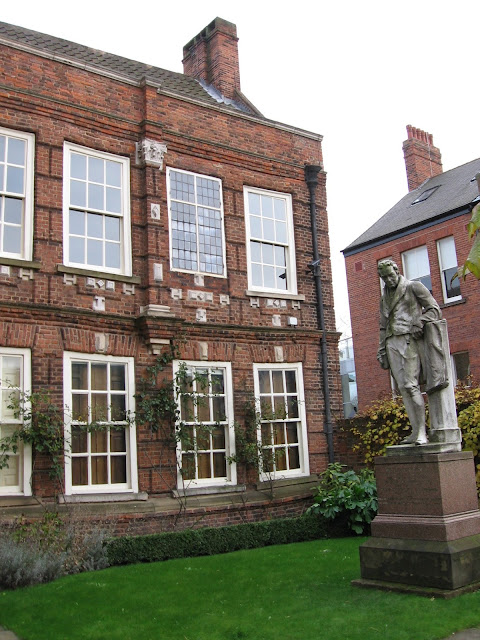

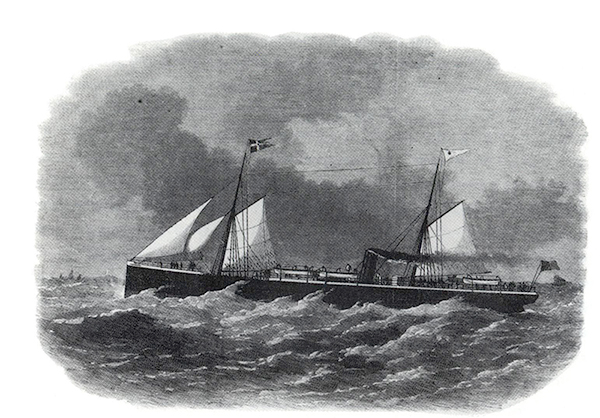
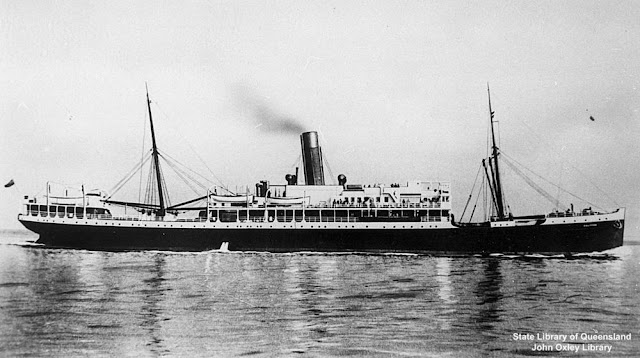
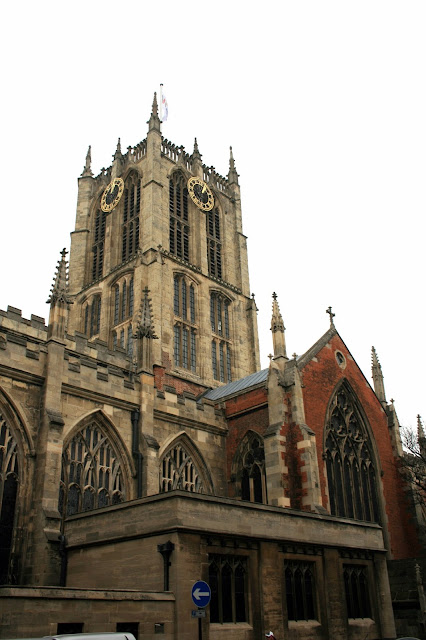

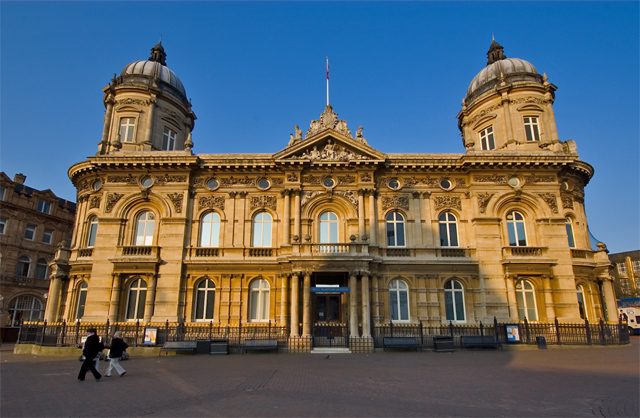



Comments
Post a Comment